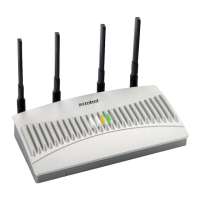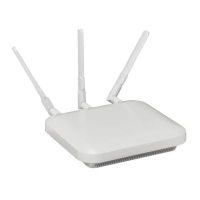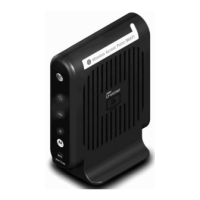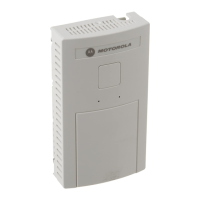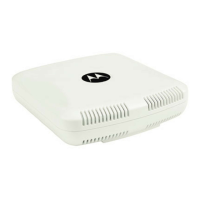Device Configuration 5 - 283
7. Set or override the following parameters for IPv6 Traffic Class Mapping for untagged frames:
Use the spinner controls within the 802.1p Priority field for each DSCP row to change or override the priority value.
8. Select the OK button located to save the changes and overrides. Select Reset to revert to the last saved configuration.
5.4.5.4.7 Overriding a Spanning Tree Configuration
Overriding the Network Configuration
The Multiple Spanning Tree Protocol (MSTP) provides an extension to RSTP to optimize the usefulness o f VLANs. MSTOP
allows for a separate spanning tree for each VLAN group, and blocks all but one of the possible alternate paths within each
spanning tree topology.
If there’s just one VLAN in the access point managed network, a single spanning tree works fine. However, if the network
contains more than one VLAN, the network topology defined by single STP would work, but it’s possible to make better use of
the alternate paths available by using an alternate spanning tree for different VLANs or groups of VLANs.
A MSTP supported deployment uses multiple MST regions with multiple MST instances (MSTI). Multiple regions and other STP
bridges are interconnected using one single common spanning tree (CST).
MSTP includes all of its spanning tree information in a single Bridge Protocol Data Unit (BPDU) format. BPDUs are used to
exchange information bridge IDs and root path costs. Not only does this reduce the number of BPDUs required to communicate
spanning tree information for each VLAN, but it also ensures backward compatibility with RSTP. MSTP encodes additional
region information after the standard RSTP BPDU as well as a number of MSTI messages. Each MSTI messages conveys
spanning tree information for each instance. Each instance can be assigned a number of configured VLANs. The frames
assigned to these VLANs operate in this spanning tree instance whenever they are inside the MST region. To avoid conveying
their entire VLAN to spanning tree mapping in each BPDU, the access point encodes an MD5 digest of their VLAN to an instance
table in the MSTP BPDU. This digest is used by other MSTP supported devices to determine if the neighboring device is in the
same MST region as itself.
To override a profile’s spanning tree configuration:
1. Select Devices from the Configuration tab.
2. Select Device Overrides from the Device menu to expand it into sub menu options.
3. Select a target device from the device browser in the lower, left-hand, side of the UI.
4. Select Network to expand its sub menu options.
5. Select Spanning Tree.
Traffic Class Devices that originate a packet must identify different classes or priorities for IPv6 packets.
Devices use the traffic class field in the IPv6 header to set this priority.
802.1p Priority Assign a 802.1p priority as a 3-bit IPv6 precedence value in the Type of Service field of the
IPv6 header used to set the priority. The valid values for this field are 0-7. Up to 64 entries are
permitted. The priority values are:
• 0 – Best Effort
• 1 – Background
• 2 – Spare
• 3 – Excellent Effort
• 4 – Controlled Load
• 5 – Video
• 6 – Voice
• 7 – Network Control
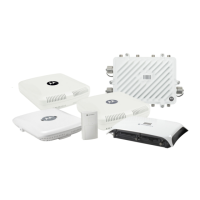
